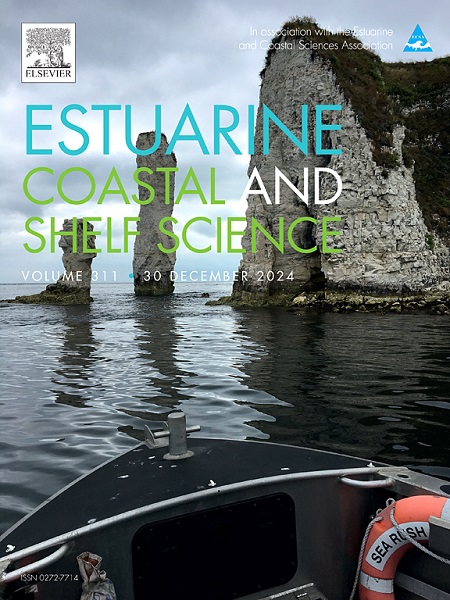Contribution of different bacterial groups in the carbon flow through the microbial food web
IF 2.6
3区 地球科学
Q1 MARINE & FRESHWATER BIOLOGY
引用次数: 0
Abstract
Bacteria greatly contributes to the transfer of dissolved organic carbon to the upper trophic levels. Nevertheless, little is known about the contribution of specific bacterial groups. Here, we conducted three seasonal experiments (both, microcosm and mesocosm) in the coastal area of the central Adriatic with the aim of determining the contribution of selected bacterial groups to carbon flow through the microbial food web. We assessed the growth rates of four bacterial groups (Bacteroidota, SAR11, Rhodobacteraceae, and Gammaproteobacteria), as well as aerobic anoxygenic phototrophs, and their contributions to biomass production and carbon transfer to upper trophic levels. For the first time, we reported a significant contribution of aerobic anoxygenic phototrophs to the carbon flow, especially during the summer.
Under initial winter conditions, SAR11 contributed the most to bacterial biomass production, while Gammaproteobacteria were the primary contributors to grazing loss and served as the preferred prey. As temperature increased, the contribution of Gammaproteobacteria and Bacteroidota to bacterial biomass production also increased. Regarding grazing loss, SAR11 and Bacteroidota were the dominant contributors in spring, whereas Gammaproteobacteria and Rhodobacteraceae played the most significant role during summer. Under nutrient-enriched conditions, SAR11 contributed the most to both bacterial biomass production and grazing loss during winter. However, with rising temperatures, Gammaproteobacteria, Rhodobacteraceae and Bacteroidetes became the primary contributors to bacterial biomass production and Gammaproteobacteria and Bacteroidetes in grazing loss. Our estimates suggest that Gammaproteobacteria and the SAR11 clade were more significantly impacted by grazing, whereas Bacteroidota and Rhodobacteraceae were equally influenced by both nutrient availability and grazing pressure.
Therefore, the results obtained in this study are useful for evaluating the potential contributions of diverse bacterial groups to carbon cycling in marine ecosystems under changing environmental conditions, particularly during shifts in seawater temperature. We further analyzed the dynamics of bacterial community composition in relation to varying environmental factors.

不同细菌群在微生物食物网碳流中的贡献
细菌极大地促进了溶解有机碳向上层营养层的转移。然而,人们对特定细菌群的作用知之甚少。在这里,我们在亚得里亚海中部沿海地区进行了三个季节性实验(微观和中微观),目的是确定选定的细菌群对微生物食物网中碳流的贡献。我们评估了四种细菌群(拟杆菌门、SAR11、红杆菌科和γ变形菌门)以及有氧无氧光养菌的生长速度,以及它们对生物量生产和向上层营养水平碳转移的贡献。我们首次报道了有氧无氧光养生物对碳流的显著贡献,特别是在夏季。在初始冬季条件下,SAR11对细菌生物量的贡献最大,而Gammaproteobacteria是放牧损失的主要贡献者,是首选猎物。随着温度的升高,伽马变形杆菌和拟杆菌门对细菌生物量的贡献也增加。放牧损失方面,春季以SAR11和拟杆菌属为主,夏季以γ变形菌属和红杆菌科为主。在富营养化条件下,SAR11对冬季细菌生物量产量和放牧损失贡献最大。然而,随着温度的升高,伽马变形菌门、红杆菌科和拟杆菌门成为细菌生物量产生的主要贡献者,而伽马变形菌门和拟杆菌门则成为放牧损失的主要贡献者。我们的估计表明,伽玛变形菌门和SAR11分支受到放牧的影响更为显著,而拟杆菌门和红杆菌科同样受到养分有效性和放牧压力的影响。因此,本研究的结果有助于评估在不断变化的环境条件下,特别是在海水温度变化期间,不同细菌群对海洋生态系统碳循环的潜在贡献。我们进一步分析了细菌群落组成与不同环境因素的动态关系。
本文章由计算机程序翻译,如有差异,请以英文原文为准。
求助全文
约1分钟内获得全文
求助全文
来源期刊
CiteScore
5.60
自引率
7.10%
发文量
374
审稿时长
9 months
期刊介绍:
Estuarine, Coastal and Shelf Science is an international multidisciplinary journal devoted to the analysis of saline water phenomena ranging from the outer edge of the continental shelf to the upper limits of the tidal zone. The journal provides a unique forum, unifying the multidisciplinary approaches to the study of the oceanography of estuaries, coastal zones, and continental shelf seas. It features original research papers, review papers and short communications treating such disciplines as zoology, botany, geology, sedimentology, physical oceanography.

 求助内容:
求助内容: 应助结果提醒方式:
应助结果提醒方式:


